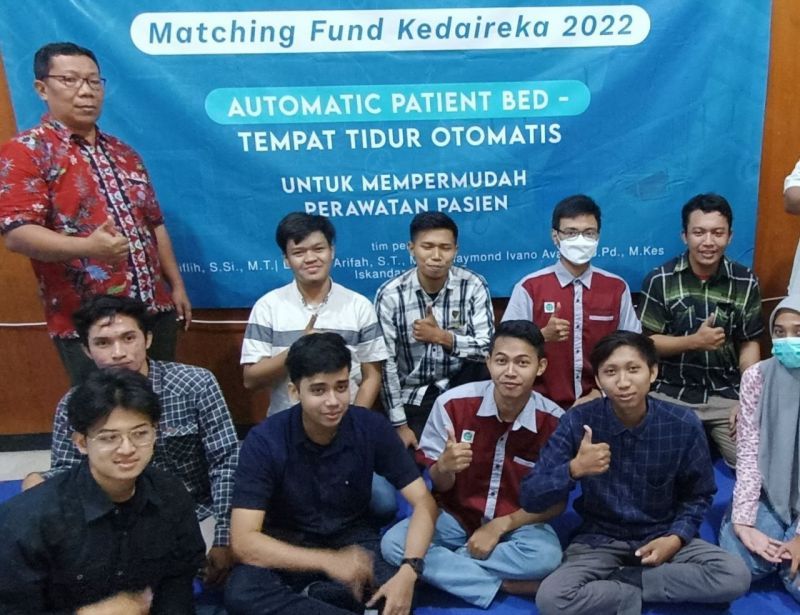From Personal Experience to Automatic Patient Bed: Feature-Rich and Practical

Unesa.ac.id, SURABAYA—Patients who seek treatment or are hospitalized need a bed to rest and lie down comfortably. Therefore, various designs of patient beds, including automatic ones, have been developed.
One of the innovations in automatic patient beds comes from a team at the Faculty of Engineering (FT), Universitas Negeri Surabaya (UNESA), consisting of Gibran Dzikri Nakhwa Rabbani, Bima Aditya, Umar Faruq Assyadillah, Gusti Rangga Abdillah, and Anissa Dwi Lathifa. The team is supervised by Dzulkiflih, S.Si., M.T., and Agung Prijo Budijono, S.T., M.T.
It turns out that the Automatic Patient Bed was inspired by the personal experience of one of the designers. Dzulkiflih shared that he has a family member who suffers from liver disease. Symptoms of this disease include fatigue and upper abdominal pain, making it difficult for the patient to move, get up, and sit down.
In the hospital, the care was quite challenging when the patient needed to lie down, sit, and get up. Since the patient bed was not automatic, they had to use manual methods, even using pillows for support.
"Besides my family member, many patients experience the same thing. That's why my friends and I created a more comfortable and practical automatic patient bed. With just a remote control, the bed can be adjusted according to the needs, whether it's the height or the tilt," he said.

The FT lecturer explained that their patient bed is equipped with various features. First, the side tilting feature allows the mattress to be tilted up to 45 degrees to the right and left. Second, the headrest feature can adjust the headrest angle up to 70 degrees from the flat position.
Third, the footrest feature allows the mattress surface for the feet to be raised up to 20 cm and lowered up to 15 cm. Fourth, the open duty feature provides access to the waste disposal door under the mattress.
This bed also uses three linear motors as actuators, claimed to handle loads up to 150 kg. "All these movement mechanisms can be controlled using a remote, either wired or wireless, according to the needs of healthcare institutions," he added.
Agung added that the innovation took 4 months to complete. Five units have been produced in collaboration with CV Cahaya Berkah Gusti under the Kedaireka scheme. He mentioned that the bed meets health standards, even the paint used is special. "This bed can also be equipped with a battery, so power outages can be minimized," he explained.
The mechanical engineering lecturer also mentioned that some materials for the bed had to be imported from abroad. This bed, he added, is an improvement from the first version, which initially had only 2 units and was later developed with additional features and mechanisms.
Currently, he and his team are focusing on marketing and collaborating with several healthcare institutions in Surabaya and Sidoarjo to add more features. In the future, they aim to optimize the bed's wheels to make it easier to move, similar to a supermarket trolley.
***
Author: Mohammad Dian Purnama
Editor: @zam Alasiah
Documentation: Documentation Team of Automatic Patient Bed FT UNESA
Share It On: